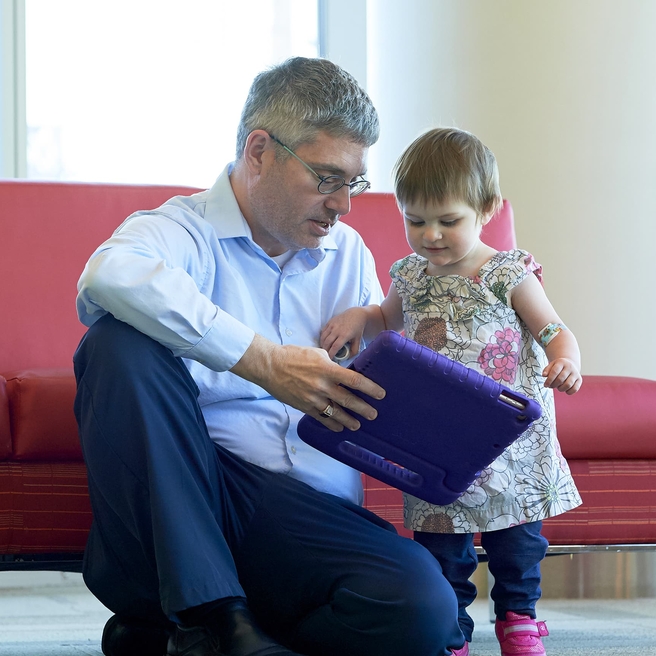What is common variable immunodeficiency?
Common variable immunodeficiency (CVID) is a disease of the immune system. In healthy people, the immune system protects the body against germs by making antibodies. Antibodies are proteins in the blood that can find and destroy germs that cause infections.
People with CVID can’t make enough antibodies to fight infections. This makes them more vulnerable to infections. Children with CVID are more like to get infections, take longer to recover from infections and have a great chance of getting pneumonia.
CVID can also make children more vulnerable to other health conditions such as anemia, inflammatory bowel disease (IBD) and others.
Symptoms of CVID are often like other childhood illnesses but may last longer and be more severe.
Signs and symptoms of CVID
Symptoms may include:
- Repeated sinus, lung and respiratory infections
- Ear and eye infections
- Skin infections
- Nausea, vomiting and/or diarrhea
- Trouble gaining weight
- Slow growth
Causes of common variable immunodeficiency
CVID is the most common of the primary immunodeficiencies in children and adults. It affects about 1 in every 25,000 people.
The causes of CVID are varied. More than a dozen genes have been associated with CVID – accounting for about 10 percent of people with the disorder. For most children with CVID, the cause remains unknown. Researchers continue to investigate possible causes of CVID.
Diagnosis and testing for CVID
Diagnosing common variable immunodeficiency can be challenging. Many of its symptoms mimic other common conditions – and generally are not serious. When symptoms last longer than common childhood illnesses – or are more severe – consider talking to your child’s doctor.
In most cases, doctors diagnose CVID through blood tests is measure the level of antibodies and specific proteins in the blood. The goal of these tests is to see how well your child’s immune system functions.
In some cases, doctors may request your child have a chest X-ray or other body scans. These tests can help clinicians see if CVID has caused any damage to your child’s organs. like their lungs or bones.
Treatment of common variable immunodeficiency
The goal of treatment for CVID is to control the symptoms and improve the quality of your child’s life. Most children with CVID will need aggressive treatment to combat infections. In many cases, your child’s doctor will prescribe antibiotics to treat – or prevent – infections.
Doctors may also recommend a treatment called immunoglobulin replacement therapy to give your child’s body the tools it needs to fight off infections better. In immunoglobulin (Ig) replacement therapy, some of the plasma in your child’s blood is removed then replaced with antibody-rich plasma. The new plasma serves as a “jump start” for your child’s ailing immune system and begins attacking any viruses or bacteria found in your child’s body. Ig replacement therapy can be delivered by IV (intravenously) or through the skin (subcutaneously).
When CVID is causing severe health problems, treatment may include an allogeneic bone marrow transplant or a cord blood transplant. These procedures involve using bone marrow or cord blood from a healthy individual and transplanting it into the affected patient to help rebuild their immune system.
Follow-up care and long-term outcomes
All children diagnosed with common variable immunodeficiency will need lifelong treatment and monitoring.
Children with CVID are more likely to develop:
- Autoimmune disorders
- Chronic lung complications from repeated infections
- Obstructive airway disease
- Cancer
- Endocrine abnormalities
- GI problems
- Other disorders
Regular doctors’ visits are recommended for individuals with CVID to monitor symptoms and adjust treatment as needed.
While there is no cure for common variable immunodeficiency, many people can live active and fulfilling lives with ongoing treatment. The lifespan of affected individuals has been greatly lengthened since immunoglobulin replacement therapy became the standard of care. CVID complications may affect life expectancy, but typically appear over time.
Reviewed by Neil Romberg, MD
